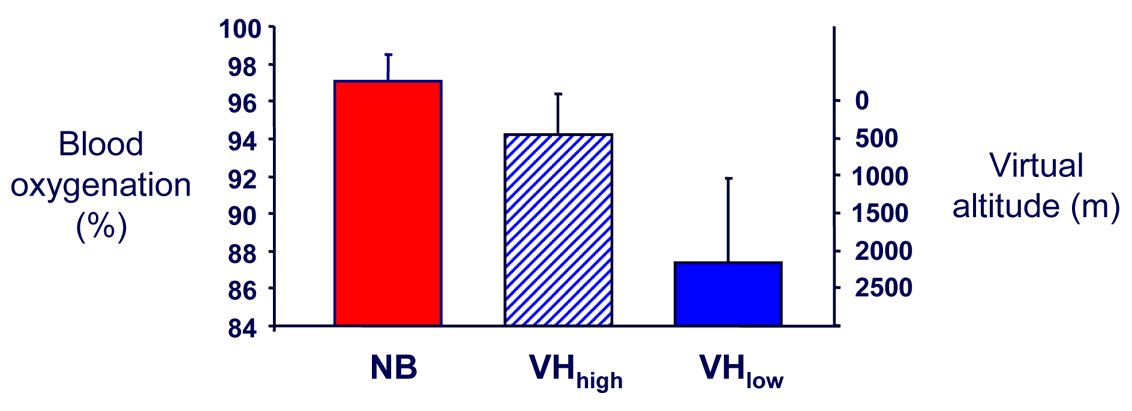|
HYPO WHAT?
To comprehend what hypoventilation training is, the following
pages propose:
1)
A definition of hypoventilation
2)
A short history of hypoventilation
training
3)
An answer to the most frequently asked
questions (FAQ)
1) Hypoventilation, what is it all about?
John West,
one of the greatest
experts
in respiratory physiology
defines hypoventilation as a
"level of alveolar ventilation
that
does not allow
oxygen
(O2)
and carbon dioxyde
(CO2)
concentrations
to be maintained
at normal
values".
In short, one does not breathe enough. The amount of air
getting to
lungs,
and
precisely to the
pulmonary
alveoli,
is
reduced.
Hypoventilation can be caused by
many medical problems: usage of drugs like
morphine
or
barbiturates that depress the central drive to the respiratory
muscles, damage to the chest wall or paralysis of the
respiratory muscles, and high resistance to breathing.
Hypoventilation
is also seen
in some obese patients who have somnolence, polycythemia and
excessive appetite.
Aside
from medical causes, hypoventilation can also occur when
one decides to voluntarily decrease the breathing frequency.
This is called voluntary hypoventilation.
Thus,
hypoventilation training is a method which consists to train
with restricted breathing in order to reduce the
amount of air entering the lungs.
In practical terms,
hypoventilation has to be applied by performing short and well
measured breath holds during exercise.
There are two ways to carry out
voluntary hypoventilation: at high pulmonary volume or at low
pulmonary volume.
Hypoventilation at high pulmonary volume consists of keeping a
maximum amount of air in the lungs during the breath holdings. To do so,
it is necessary to hold one's breath just after inhaling (figure A).
Conversely, when performing hypoventilation at low pulmonary volume,
the breath holdings have to be carried out with partially empty
lungs. To apply this hypoventilation technique, one has to first exhale
and then to hold one's breath for a few seconds. This is the
"exhale-hold" technique (figure B).

The scientific studies
conducted by Paris 13 University have shown that only hypoventilation
at low pulmonary volume can provoke both an increase in CO2
concentrations (hypercapninc effect) and a drop in O2
(hypoxic effect) in blood and muscle.
This combined
hypoxic and hypercapnic effect is essential for obtaining the
physiological adaptations that enable to improve performance.
Hypoventilation at high pulmonary volume, used for several
decades by swimmers or runners, provokes only an increase in
CO2
concentrations.
When the exhale-hold technique is correctly applied, it is
possible to obtain a decrease in blood oxygenation similar to
what would occur at altitudes above 2000 m.

Level of blood oxygenation and
corresponding altitude at the end of an exercise carried out at
sea level with normal breathing (NB) and voluntary
hypoventilation at high (VHhigh) and low (VHlow)
pulmonary volume

(a short history)
|
